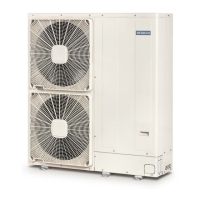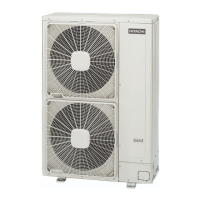54
PMML0600 rev.0 - 06/2022
5
SPACE HEATING AND DHW FOR YUTAKI M / YUTAKI HYDROSPLIT
DRAIN AND WATER PIPING
water pressure and the water temperature range in which the unit can operate.
• YUTAKI units are conceived for exclusive use in a closed water circuit.
• The internal air pressure of the expansion vessel tank will be adapted to the water volume of
the nal installation (factory supplied with 0.1 MPa of internal air pressure).
• Drain taps must be provided at all low points of the installation to permit complete drainage
of the circuit during servicing.
5.5.5 Anti-freezing protection for water circuit
◆ Anti-freezing protection
Frost can damage the system. To prevent components from freezing, so
ware has been designed
with special frost protection functions, that include the activation of pump & heater in case of
low temperatures (see Service Manual, chapter Water pump control).
In case of a power supply failure, functions above cannot guarantee protection, allowing freezing
and possible breakage of pipes and / or components. Due to that, an anti-freezing system
(independent of power supply) is required:
• Adding glycol into the water circuit to lower the freezing point of water.
• Adding anti-freeze valves (eld supplied)
! CAUTION
Both methods cannot be used simultaneously since glycol can leak out from valves to environment.
5.5.6 Glycol as anti-freezing protection
Adding glycol into the water circuit to lower the freezing point of water.
For YUTAKI systems, 2 types of glycols can be used: ethylene glycol & propylene glycol.
• Ethylene glycol is toxic. Consequently, its use is forbidden in systems that includes a domestic
hot water tank.
• Propylene glycol (including necessary inhibitors, classied as Category III acc. To EN1717) can
be used in all systems.
Required concentration depends on:
• The lowest expected outdoor temperature.
• Protection against bursting or freezing.
On graphic below, required concentration depending on outside temperature is shown.

